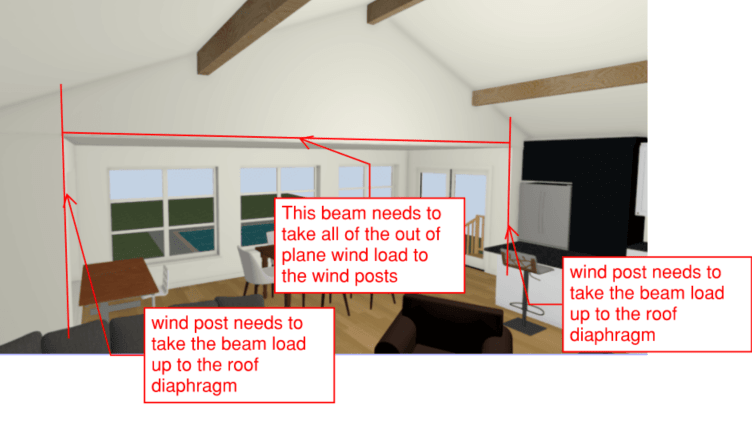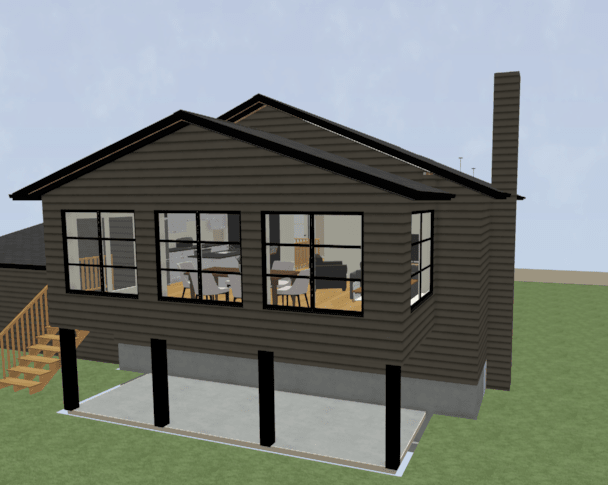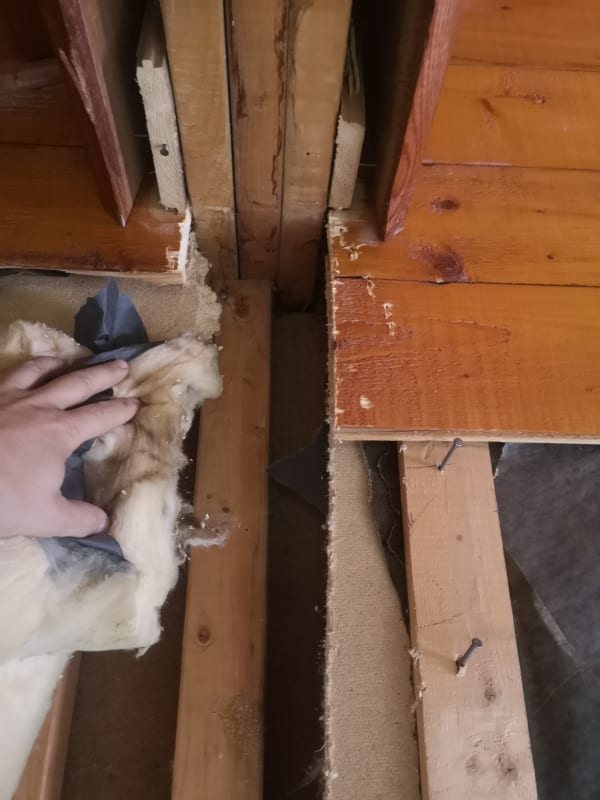Nicolas P.
Mechanical
Hi everyone,
I need to open a gable end wall with an existing vaulted ceiling to include an existing addition within the open floor space (it is currently separated with the old house exterior wall). I have already sized the beam that will be required to support the roof beams. That new beam needs to be flush with the addition ceiling, which is a standard 8’ flat ceiling, as per the picture below:
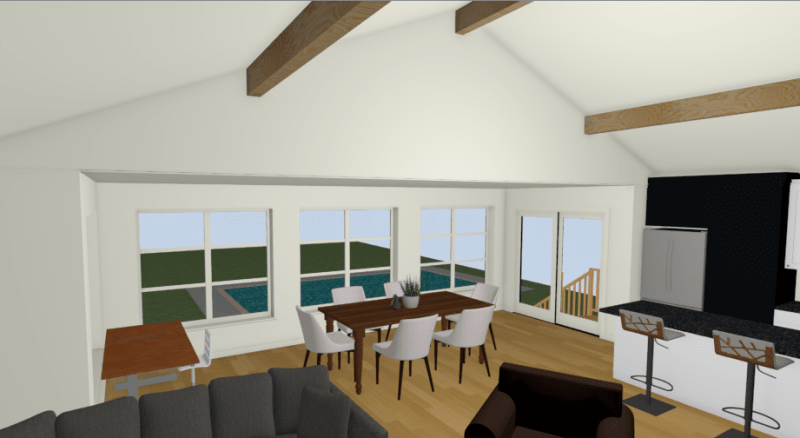
Now, I assume this vaulted ceiling may be a retrofit, as the current gable end framing up top is made of a gable end truss (2x4’s on the flat) such as the picture below, instead of 2x4’s at right angle with the wall face:
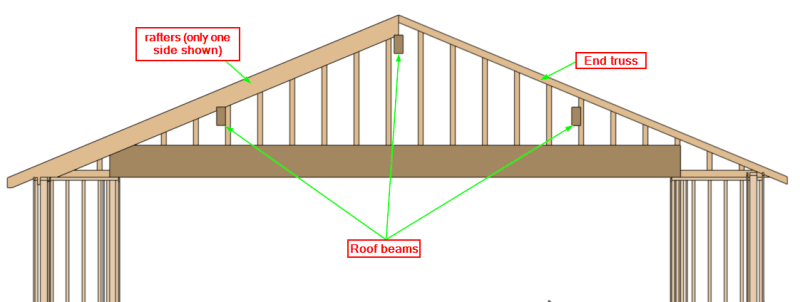
Where I’m a bit in a pickle is how am I going to support that gable end truss without modifying it (I prefer not modifying trusses) ?
What I was thinking is to sister my LVL beam next to this gable end truss and bolt a steel right angle on its side to it to support the truss. I did not like the idea to rely on nails or screws through a 2x4 bottom chord:
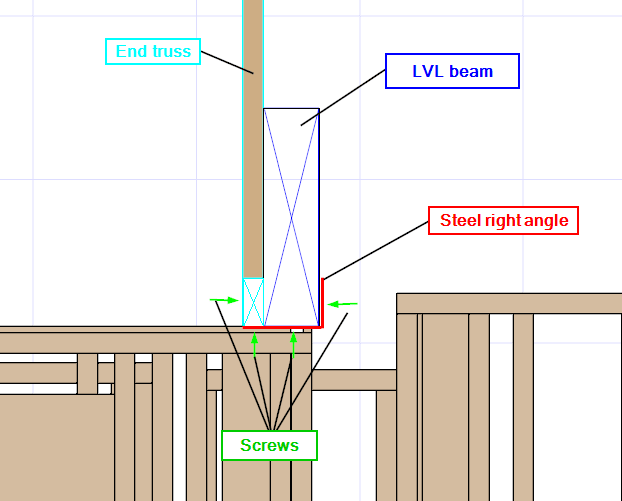
Anything I’m missing from a structural standpoint?
I would still nail/screw the end truss to the LVL from the side through the bottom chord for lateral movement, and through the steel angle in the bottom of the truss as well.
Am I pushing this too far? Should I just nail the truss (bottom chord and webbing) to the LVL without the steel angle?
I need to open a gable end wall with an existing vaulted ceiling to include an existing addition within the open floor space (it is currently separated with the old house exterior wall). I have already sized the beam that will be required to support the roof beams. That new beam needs to be flush with the addition ceiling, which is a standard 8’ flat ceiling, as per the picture below:

Now, I assume this vaulted ceiling may be a retrofit, as the current gable end framing up top is made of a gable end truss (2x4’s on the flat) such as the picture below, instead of 2x4’s at right angle with the wall face:

Where I’m a bit in a pickle is how am I going to support that gable end truss without modifying it (I prefer not modifying trusses) ?
What I was thinking is to sister my LVL beam next to this gable end truss and bolt a steel right angle on its side to it to support the truss. I did not like the idea to rely on nails or screws through a 2x4 bottom chord:

Anything I’m missing from a structural standpoint?
I would still nail/screw the end truss to the LVL from the side through the bottom chord for lateral movement, and through the steel angle in the bottom of the truss as well.
Am I pushing this too far? Should I just nail the truss (bottom chord and webbing) to the LVL without the steel angle?


